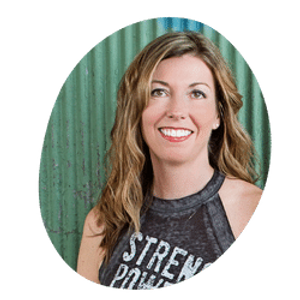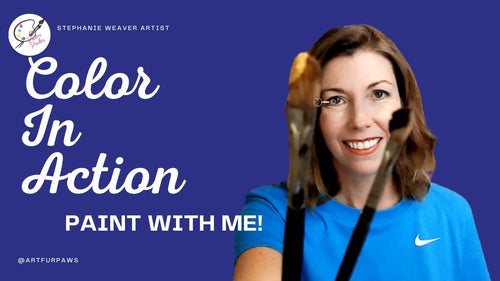Introduction to Plein Air Painting
When you're out in the open air, you want to be able to work quickly and easily, so it's best to have a small, portable set of supplies that you can take with you wherever you go. This includes a sketchbook, pencils, paints, brushes, and a palette.
If you're interested in painting outdoors, also known as Plein air painting, you'll need to make sure you have the right supplies. In this article, we'll go over the essential items you'll need to get started with Plein air painting. With a small, portable set of supplies, you'll be able to paint anywhere you go!
What is Plein air painting?

Plein air painting is a type of painting that is done outdoors. The word "Plein" comes from the French word for "open," and "air" refers to the outdoors. So, Plein air painting literally means "open-air painting."
Plein air painting became popular in the mid-19th century when artists began to leave their studios and paint in natural light. This was a big change from the traditional studio setting, where paintings were lit by candles or oil lamps.
Plein air painting allows artists to capture the changing light and scenery of the outdoors. It also gives them a chance to interact with their surroundings, which can be inspiring and invigorating.
Plein air painting can be done in any location, but it is often associated with beautiful landscapes. When you're out in the open air, you want to be able to work quickly and easily, so it's best to have a small, portable set of supplies that you can take with you wherever you go.
What Supplies Do You Need for Plein Air Oil Painting?
Oil painting is a popular choice for Plein air painting because it allows for a lot of detail and texture. However, it can be more challenging to work with than other types of paint.
Plein Air Oil Painting Supplies
-Brushes: A good set of brushes is essential for oil painting. Choose brushes that are made from natural fibers, such as hog hair or sable. These types of brushes will hold up better to the harsh chemicals in oil paint.
-Easel and Palette combo: A portable easel will allow you to set up your painting station anywhere. Choose an easel that is lightweight and easy to carry. For Plein air painting I prefer the Sienna Plein Air Pochade box as this includes a carrying case for paints and the palette.
And while I don't have this one yet (ordered it :) stay tuned for a review :) ), the Guerrilla Painter 5x7" Pocket Box is very appealing because it is small, and can easily sit on your lap for quick easy paint sessions.
-Oil paint: Oil paint is the best type of paint to use for plein air painting. It allows for a lot of detail and texture. I recommend keeping your palette limited for weight's sake. Here is my minimalist landscape palette:
- Yellow Ochre
- Sap Green
- Ultramarine Blue
- Alizarin Crimson
- Cadmium Red Light
- Titanium White
And then I'll add a few specialty colors based on my mood or what I hope to create. Like Quinacridone Magenta, Emerald Phthalo, Cadmium Yellow Light, Kings Blue. (check out my oil painting supply tutorials on youtube for which quality paints I use).
-Gamsol: Gamsol is a non-toxic, odorless mineral spirit used to thin oil paint and clean brushes. I use the palette cups to carry this and then place that inside of an air-tight container.
-Galykd: Galkyd is a fast-drying medium with high viscosity which allows the paint to dry quickly and apply additional layers in the same painting session. I'll put some of this in the 2nd cup of the palette cups.
- Wet Painting Carrier: This was the thing I didn't plan for the first time - I needed something to carry my wet painting back to the car!
There are several options available, for the cheapest option - grab a pizza box...for more dependable though, you'll want something built to keep the paintings protected like :
- Or this plastic, sturdy option, the Raymar Wet Painting Carrier
With these supplies, you'll be all set to start oil painting Plein air!
Packing Light for Plein Air Painting: Tips and Tricks
I have two go-bags for Plein air painting:
1. The first bag weighs 20 pounds 👇, and that one is designed for a whole day trip and uses the Sienna Plein Air Pochade Box inside of a computer backpack (that's right - a computer backpack that I collected from my kids reject pile! :) ).

Broken down, here are the contents by weight for more robust painting trips:
- Pochade Box = 5LBS
- Oil paints = 2.6LBS
- Two 8x10 panels and two 11x14 canva panels = 1LB
- Tripod = 2.6LBS
- Miscellaneous supplies like: cashews/almonds, bottle of water, bug spray, sunscreen and the backpack itself = 15.8
TOTAL = 20LBS
Let me tell you, that gets heavy after a while of carrying it! This, however, is my go-bag for art shows, studio painting trips, and excursions where I'll be painting for 5 or more hours.
2. The 2nd bag weighs about 1 pound and that's what I'll talk about in this section.
Packing Light Tips
-Choose a smaller sketchbook or canvas. A small sketchbook is easier to carry than a large one, and you can always add more pages later. For smaller canvases, this is the reason why the Guerrilla Painter Pocket Box appeals to me as does painting inside of Altoid Tins.

- For oil painting, you can use a small Altoids tin and put the basic colors on the bottom of the tray, and put it in your purse. For the brush, you can use a single travel brush in a baggie in your purse with a paper towel.

-Bring only the essential brushes. You don't need a huge set of brushes; just bring the ones you know you'll use. For the Altoid tin oil painting, I only bring 2 brushes,
- Solvents For the Altoid tin paintings, I have 2 baggies in my purse:
- a baggie with a clean dry rag to wipe my brushes in between color changes.
- a baggie with a paper towel that has some Gamsol on it. (You might want to double bag this one - just in case :))
Regardless of the size of my painting supplies I always also pack the following:
- Pack a light lunch and snacks. You don't need to bring a lot of food; just enough to tide you over until you're done painting. I typically bring almonds or a protein bar of some sort.
-Bring a water bottle. A water bottle will keep you hydrated while you're painting.
-Wear comfortable shoes. You'll be doing a lot of walking, so make sure you're wearing comfortable shoes.
-Pack a sunscreen and insect repellent. Protect yourself from the sun and bugs while you're painting.
- Optional Grab a big-brimmed hat (no sunglasses, as it will change the hue of the colors).
By following these tips, you'll be able to pack light and still have everything you need for a successful Plein air painting session.
_______________________________________
So there you have it! Our top plein air painting tips for beginners. I hope this was helpful and that you feel inspired to get out there and start painting.
Don’t forget to share your paintings with me on Instagram by using the hashtag #positivepainter.
I can’t wait to see what beautiful things you create!
Pin for Later













































